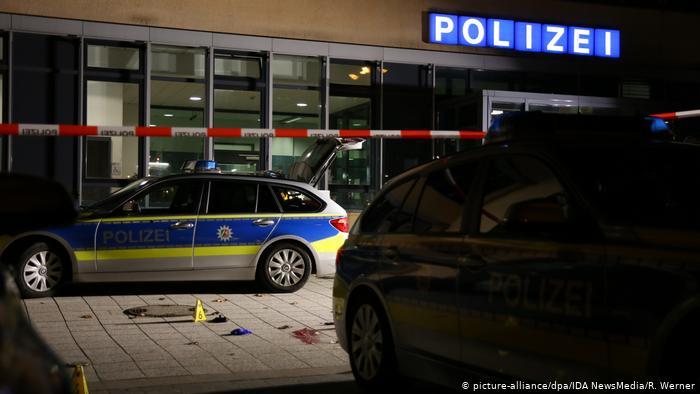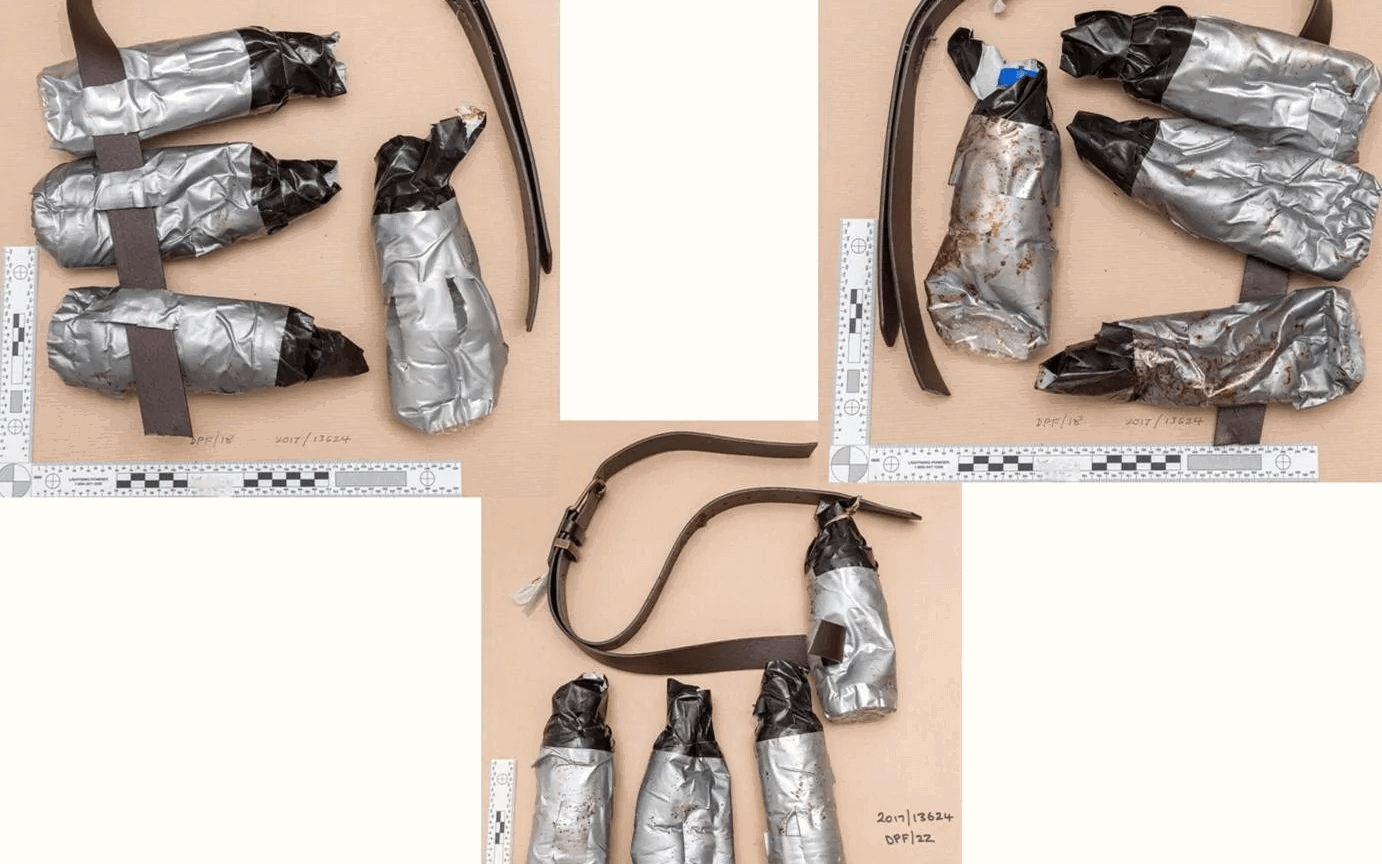Terrorist Attacks & "Terrorist" "Attacks"

The desire to die may be the primary reason behind many paltry attacks in Europe, as ISIS become less relevant.
(March 27th 2020)
The world has suffered frequently at the hands of Islamic jihadist terrorism as meticulously co-ordinated attacks such as those carried out in Paris (November 2015) as well as carefully planned lone-actor massacres (Orlando, June 2016) have left dozens dead and hundreds wounded. However, whilst most terrorists clearly desire to inflict maximum damage onto their intended target, other less spectacular and far less devastating “attacks” have barely left a footnote on the society targeted. Uninspiring attempts such as the stabbing of an Italian soldier in Milan (September 2019) in an attack previously concluded to have been terrorism raised questions as to the perpetrators genuine motivation and aspirations.
Realistically, in various low-grade attacks there is a severely limited amount of damage that the perpetrator could possibly inflict upon society, making the attack seem almost pointless in the first place. This complicates the already highly-complex analysis of terrorism. These attacks could have been poorly-planned and naïve attempts at genuine terrorism; or they could have been carried out under alternative motivations without the aspiration of inflicting mass-devastation. Given the high likeliness a jihadist attacker being fatally shot by responding police, it could be questioned or considered that many low-grade attempts are done primarily to bring about the perpetrators own death.
This could be done for several reasons, the most likely being (1) that the perpetrator wished to die through jihad and therefore to achieve the promises of the afterlife, something that terrorist groups and extremist sympathisers have actively encouraged as a glorious way to die irregardless of the casualty toll. Alternatively (2) this attack could have been carried out as provocation from a suicidal perpetrator who felt morally and religiously unable to take their own life owing to the strict prohibition of the act in the Koran.
Granted however, some failed attacks were futile simply due to the terrorists own ineptitude and downright uselessness, such as in New York (December 2017).
The subject arose following a spate of similar low-grade public stabbing attacks across Europe in early 2020. Just three days into the year, a man stabbed one person to death and injured another two in a public park in Villejuif (France) in an attack the French authorities classified as terrorism. The perpetrator, Nathan Chiasson, was shot dead by responding police who suspected him of having explosives (though this was incorrect). When police raided Chiassons apartment they found his spouse armed with a knife who claimed she wanted to commit suicide-by-cop.
Following this attack, similar incidents appeared elsewhere in France and also Germany, carried out by perpetrators who had backgrounds of extremist sympathies (although authorities have not officially classified their attacks as jihadism). Just two days later in Metz, a man known to police “for his radicalisation” threatened officers with a knife and as a result was shot, though he survived. The next day in Gelsenkirchen (Germany) a 37 year old mentally-ill Turkish man allegedly shouted “Allah Akbar” before attempting to attack police officers, who in return fatally shot him. The following month in February, another stabbing incident occurred in Dieuze (France) which left one officer with a stabbing injury to his hand whilst the perpetrator was injured in responding fire. The perpetrator had phoned ahead warning officers of his allegiance to Islamic State.

The scene of the Gelsenkirchen attack, dangerous only to the perpetrator.
Although the three incidents detailed above are still under investigation and have not been classed as terrorist attacks (perhaps not yet), the important aspect of provocation towards the police in order to solicit a possibly fatal response still remains.
The obvious possibility for this is that suicide is largely believed to be strictly forbidden within the Islamic holy text of the Koran, therefore certain individuals may creatively attempt to work around this prohibition by carrying out a jihadist attack then having another person end their life for them.
For comparison, there is a stark difference between how Islamic jihadist attacks are resolved and how other types of public attacks are concluded. Very rarely if ever do jihadists take their own life, as this would be considered a gross sin against their religion, whereas arguably the most common type of resolution for other attackers is to commit suicide. Of the ten deadliest mass-shootings in US history not including jihadist attacks, 6 of those concluded with the perpetrator taking their own life.
What does the Koran say on self-inflicted deaths?
Of course, one of the most complex obstacles is the multitude of ways that a religious text can be interpreted from one person to another. Islamic scholars however seem unanimous that suicide is strictly prohibited in within their religious laws. Islamic-centric website Dar al-Iftaa Al-Missriyyah writes on the subject: “Suicide is prohibited in Islamic law according to evidence from the Qur`an, Sunna, and the consensus of Muslim scholars. A person who commits suicide commits a major sin, though this does not take him outside of Islam.”
Statistical research carried out by Lester (2006) on the prevalence of suicide amongst Muslims notes that this teaching appears to have a society effect and a personal influence on Muslims, stating: “... despite the possible under-reporting of suicidal behaviour in countries where such behaviour is illegal, suicide rates do appear to be lower in Muslims than in those of other religions, even in countries which have populations belonging to several religious groups.”.
The heated area of debate lies in the possible allowance of taking ones own life if done so during an act of jihadism, even where the perpetrators death will surely be caused by their own actions and intentions, such as a suicide-bombing. Again, just like with every religion, the interpretations of a religious text are hugely debatable.
On one hand for example, the Muslim Public Affairs Council states that: “There is an unpopular view that actions committed in the course of jihad resulting in one's own death are not considered suicide. Such acts are instead considered a form of martyrdom. However, there is Quranic evidence to the contrary stating those involved in the killing of the innocent are wrongdoers and transgressors. Nevertheless, some claim Islam does permit the use of suicide only against the unjust and oppressors if one feels there is absolutely no other option available and life otherwise would end in death.”
To the contrary, other scholars and writers such as Hutchins (2017) strongly insist there is absolutely no justification for this whatsoever and that the only people to endorse such acts are those of terrorist groups and extremist preachers. Evidently there is widespread and far-reaching challenges as to what interpretations of the Koran are correct and therefore what is justified.
Irregardless as to whether or not the Koran does or does not endorse this, it is clear that terrorist organisations such as Islamic State strongly encourage and advocate this method as an acceptable and glorious way to die. Whether or not that is religiously correct appears somewhat irrelevant, ultimately it just means the perpetrator is wrong in their thinking. What is important is to decipher whether or not a perpetrator is launching an assault with ambitions of harming society, or whether they are carrying out an “attack” with the primary hope of meeting their death through police retaliation.
Case Studies
Milan Central Station
One intriguing case study is also one of the least reported on and least notorious attacks in Europe in recent years. The Milan Central Station (2019) stabbing offers an interesting insight into the question of whether an attack is genuinely carried out with jihadist intentions or whether it is essentially suicide-by-cop masquerading as terrorism.
During the incident, Mahamad Fathe, a 23 year old Yemini migrant, attacked a soldier outside Milan's Central Station with a pair of scissors, leaving him with non-life threatening injuries. Fathe, penniless, with no housing and no job, is alleged to have shouted “Allah Akbar” during his assault and is believed to have been known to German and Italian authorities for his sympathies to Islamic State. The stabbing was originally considered to have been a lone-actor jihadist attack (something of which is highly rare in Italy), although further investigations and Fathe's own testimony pointed further to the side of suicide-by-cop (or soldier) than to jihadist inspiration. Fathe stated: “I wanted to reach the paradise of Allah. When I attacked the soldier I was sure I would be killed and that's what I was looking for, I wanted to die.”. Fathe's desire to end his life appears evident, whether to end his poverty and suffering or to reach Allah, although whether or not he still remained to have jihadist tendencies is still unclear.
Arizona – Fountain Hills
The Milanese incident is complex enough, and other attacks are even less clear. In Maricopa County (Arizona), 18 year old Ismail Hamed called 911 and requested a police officer visit him so that the ISIS-sympathiser could “deal with them”. When police officer Brandon Wells arrived on the scene, Hamed threw small rocks at him during a futile and downright-bizarre assault later classified as a “terrorist attack”. Hamed drew a small knife and slowly walked towards the officer whilst repeatedly saying “Shoot me!”. With the knifeman advancing on him, Wells shot Hamed twice, leaving him with non-fatal injuries. Whilst Hamed had stated in his prior phone call to 911 that he was “owing my allegiance to the Islamic State” and whilst he was charged with providing assistance to a terrorist organisation, did Hamed genuinely expect to offer significant aid to the dying Islamic State with such a futile and ineffective “assault” on one single police officer, or was his incredibly limited “attack” primarily intended as a provocation to bring about the armed retaliation he evidently requested?
The Use Of Fake Explosive Belts
A common tool used by jihadists who ultimately end up being fatally shot is that of a hoax explosive belt or vest. The use of fake explosives is common particularly in knife-attackers and has forced the fatal shootings of perpetrators during attacks in London Bridge, a Parisian police station, Whitemoor prison, most recently in Streatham (South London), and many more. Of course, the hoax device itself offers literally no practical use to the terrorist in amplifying the devastation of their attack, it's sole use appears to ensure a violent retaliation from responding officers. Unable to determine whether or not the device is dangerous or not at the time, officers are left with no choice and therefore have to fatally shoot the attacker for the safety of the public. The police cannot take chances, although this is at the expense of giving the terrorist exactly what they want, and as an unfortunate result giving reason to other “jihadis” to follow suit.

The hoax bomb vests worn by the London Bridge (2017) attackers, all of whom were fatally shot.
Aside from hoax explosive devices, other makeshift “weapons” can solicit a violent response from armed officers, despite the threat itself being almost non-existent. After carrying out a deadly truck attack in New York City on Hallowe'en 2018, the attacker existed his vehicle waving around two guns and threatening to shoot bystanders. After the perpetrator was shot in the abdomen (non-fatally) and taken to hospital, these “weapons” were found to be a paintball gun and a pellet gun. These offered almost no practical use to carrying out his attack, although they were successful in bringing about a violent response from police. Unfortunately for the attacker, he survived.
Precedence Of Americans And “Suicide-By-Cop”
The concept of provoking police officials into returning fire in order to solicit a deadly response is nothing new. The concept of suicide-by-cop is largely known especially in the United States where police are far more likely to carry firearms. In Europe (for example) this is less common, although police responding to terrorist threats will likely be armed, often very heavily.
Hutson et al (1998) insisted that “Suicide by cop is an actual form of suicide.”, having found in their work that the method accounted for 11% or fatal police shootings in their research.
Research by Kennedy et al (1998) found that 16% of police shooting incidents studied were either “Probable” or “Possible” suicide-by-cop, although a significant 67% of all incidents they deemed “Indeterminate”.
This could give explanation as to why police officers and soldiers are so consistently targeted by jihadist attackers given that they are significantly more likely to have guns and therefore to use lethal force. Alternatively, this could simply be due to terrorists hating authority or attempting to attack a representative of the government.
Conclusion
Lesser known attacks suck as those in Milan and Arizona raise interesting questions as to which attacks are carried out with the intention of (1) purposely bringing about ones death due to suicidal tendencies but without having the religious conscience to do so, or (2) carried out with genuine ambitions of damaging a society and creating long-lasting fear and hatred across a community in the name of Islam and in support of terrorist organisations.
Thankfully, many recent lone-actor terrorist attacks (particularly those on law enforcement) have been relatively miniscule in terms of casualty figures in comparison to other major attacks. The ideal resolution would be for responding officers not to fatally shoot the perpetrator as to do so can inspire other potential attackers to take heed of this method of almost certain martyrdom and follow suit with their own attack. However, given the recurrent rise in hoax explosive devices and the responding officers crucial need to take public safety as primary, this is made increasingly difficult, and sometimes the police have no choice.
Authorities and counter-terrorism officers and analysts have sufficient enough to decipher at the present time before adding in additional assaults motivated primarily by the perpetrators own dismay and desperation. Fortunately, many of these attacks only threaten a very limited amount of damage on society and can only offer so much of a problem to the field of counter-terrorism.